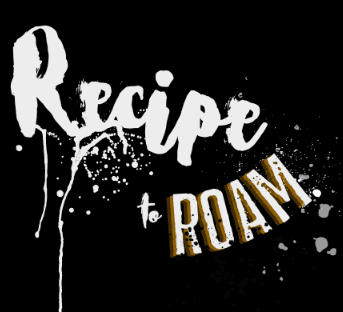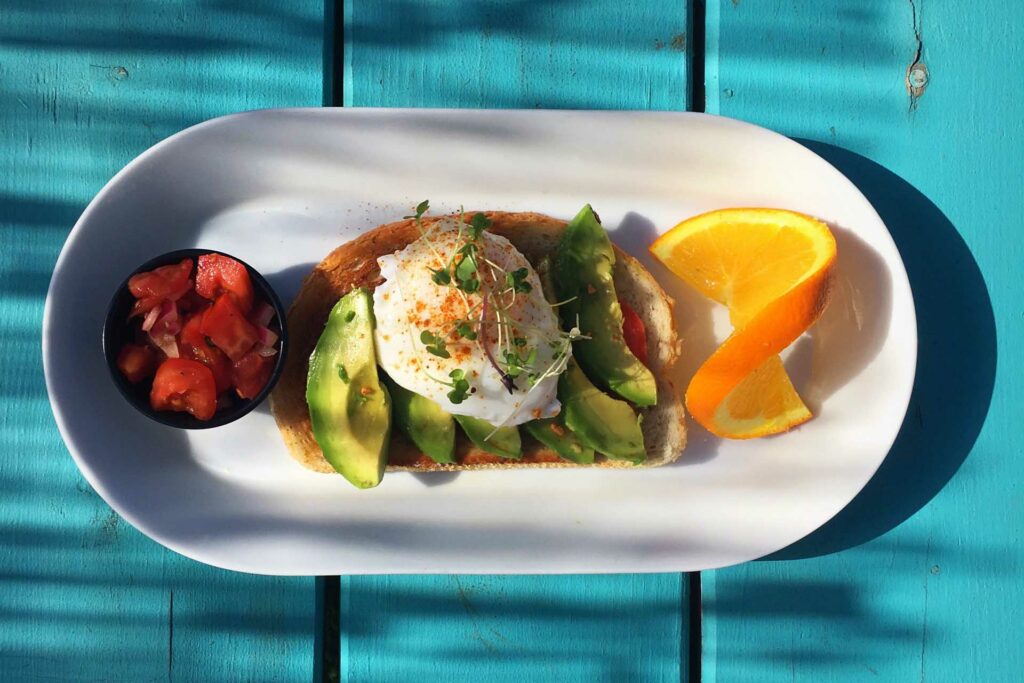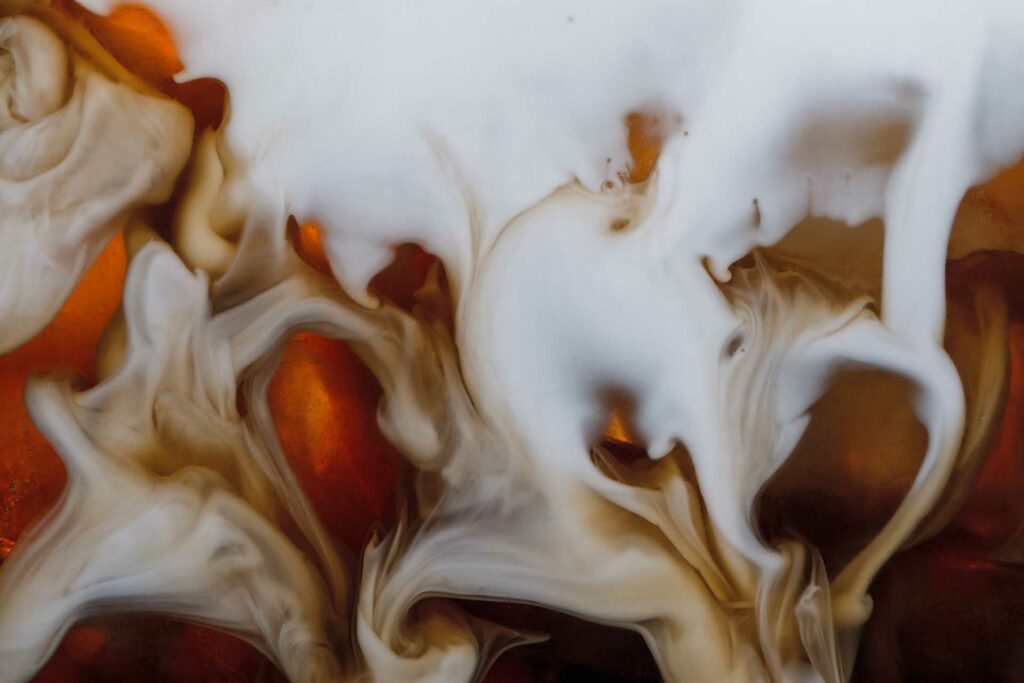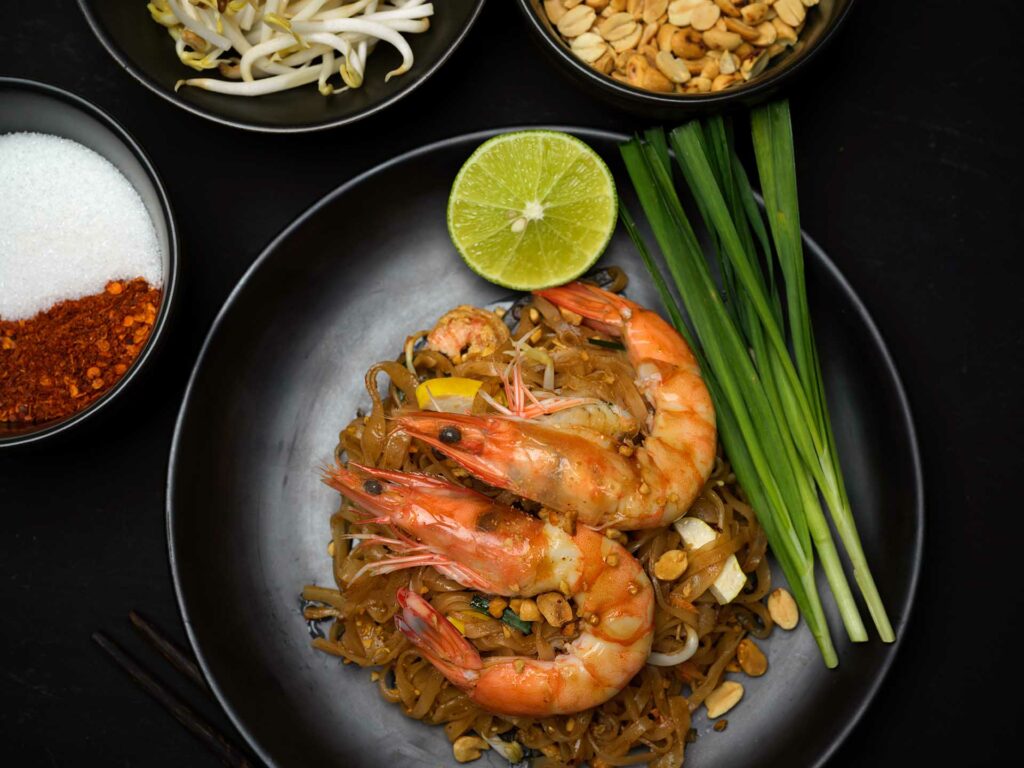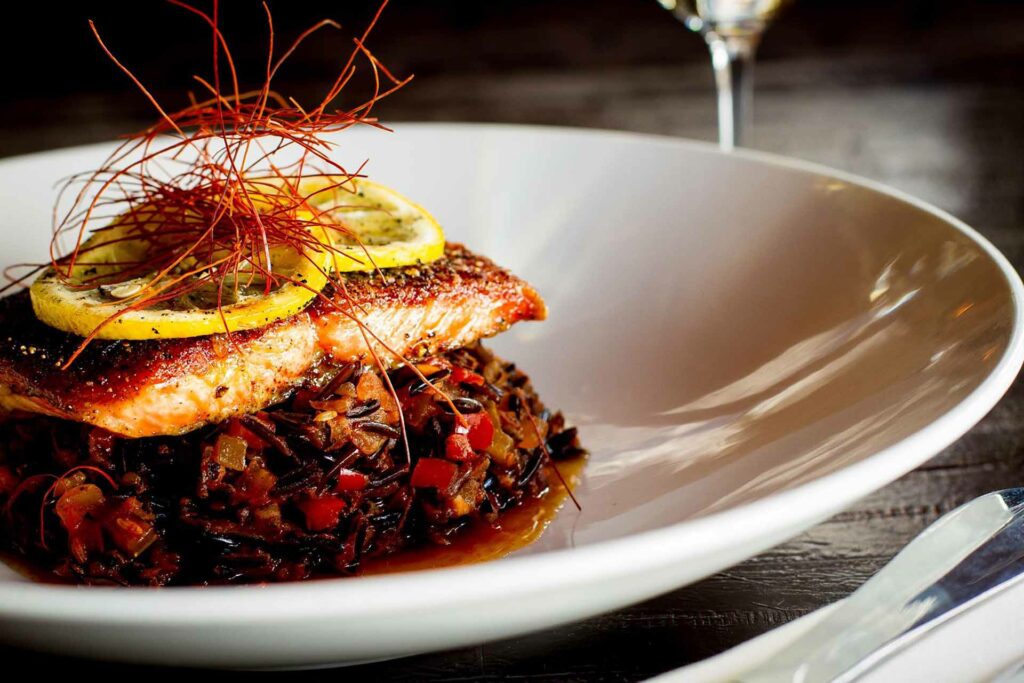Welcome to the fascinating world of salmon and the quest to uncover its tantalizing taste! Salmon has long captured the hearts and palates of seafood lovers around the globe. Its versatility, nutritional value, and unique flavor profile have made it a sought-after delicacy in various cuisines. Whether you’re a seasoned salmon aficionado or someone curious to explore this delectable fish, this blog post will provide you with a comprehensive understanding of what salmon tastes like.
Salmon, scientifically known as Salmo salar, belongs to the family Salmonidae and is native to the Northern Hemisphere. It is primarily found in the Atlantic and Pacific Oceans, as well as their surrounding rivers and lakes. The popularity of salmon as a culinary choice can be attributed to its succulent flesh, vibrant colors, and distinct flavors.
From the icy waters of Alaska to the pristine fjords of Norway, salmon habitats play a crucial role in shaping their taste. The diet of salmon also contributes significantly to their flavor profile. Wild-caught salmon feed on a diet of smaller fish, shrimp, and other marine organisms, which imparts a unique taste to their flesh. On the other hand, farm-raised salmon are fed a controlled diet that may include fish meal, soy, and other supplements, resulting in a slightly different flavor profile.
Salmon is available in various species, each with its own characteristics and taste. The most well-known species include Atlantic salmon, Chinook salmon, Sockeye salmon, Coho salmon, Pink salmon, and Chum salmon. These diverse species offer a range of flavors, textures, and colors, making each salmon experience a unique culinary adventure.
In this blog post, we will delve into the taste of different salmon species, exploring their flavor profiles and describing the nuances that set them apart. We will also discuss the factors that influence the taste of salmon, such as habitat, diet, and cooking methods. Additionally, we will provide insights into popular cooking techniques and traditional salmon dishes from various cuisines.
Whether you prefer your salmon grilled to perfection, baked with aromatic herbs, or enjoyed in a traditional dish, this blog post will equip you with the knowledge to appreciate and savor the exquisite flavors of salmon. So, let’s embark on this gastronomic journey and explore the question that lingers in the minds of many: What does salmon taste like?
Characteristics of Salmon
Salmon, with its impressive size and distinctive appearance, possesses a range of physical characteristics that make it a captivating fish. Depending on the species and life stage, salmon can vary in size, ranging from a few pounds to over 50 pounds. This large size contributes to its firm and meaty texture, which is highly desired by seafood enthusiasts.
When it comes to color, salmon exhibits a stunning array of hues, adding visual appeal to any dish. Most commonly, salmon has a silver or metallic sheen on its scales. However, during certain stages of their life cycle, such as spawning, their colors become more vibrant. For instance, Chinook salmon, also known as King salmon, develop a deep red coloration that is visually striking.
The texture of salmon is often described as firm yet tender, offering a delightful mouthfeel. Its flesh is composed of tightly packed muscle fibers, which contribute to its firmness. However, when cooked properly, the flesh becomes incredibly tender and flakes apart easily. This combination of firmness and tenderness makes salmon a pleasure to eat, providing a satisfying bite with every mouthful.
In addition to its physical characteristics, salmon is highly regarded for its nutritional value. Rich in omega-3 fatty acids, salmon is known to promote heart health, reduce inflammation, and support brain function. It is also an excellent source of protein, vitamins (such as vitamin D and B vitamins), and minerals like selenium and potassium. Incorporating salmon into your diet can be a smart choice for overall well-being.
Salmon encompasses a diverse range of species, each with its own unique traits. Let’s explore some of the different species of salmon and their specific characteristics:
- Atlantic Salmon: Atlantic salmon, also known as Salmo salar, is native to the rivers of Europe and North America. These salmon are known for their sleek appearance, with a silver body and dark spots on their back. Atlantic salmon have a mild and delicate flavor, making them versatile for various cooking methods.
- Pacific Salmon: The Pacific Ocean is home to several species of salmon, each with its own characteristics. Chinook salmon, also known as King salmon, are the largest of the Pacific salmon species. They have a high oil content, imparting a rich and buttery taste to their flesh. Sockeye salmon, known for their deep red color, offer a bold and robust flavor. Coho salmon, with their vibrant silver skin and pink flesh, have a milder taste compared to other species.
- Pink Salmon: Pink salmon, also called humpback salmon, are the smallest of the Pacific salmon species. They are known for their light pink flesh and delicate flavor. Pink salmon are often used in canned and smoked preparations due to their affordability and mild taste.
- Chum Salmon: Chum salmon, or dog salmon, have a distinctive appearance with vertical stripes on their sides. They have firm and pale flesh, making them suitable for a variety of cooking methods. Chum salmon have a milder taste compared to other species, and their flesh is often used for smoking or processing into salmon roe.
Understanding the characteristics of salmon, including its size, color, texture, and nutritional value, is essential for appreciating its culinary appeal. These characteristics, combined with the specific traits of each salmon species, contribute to the overall experience of tasting and enjoying this remarkable fish.

Flavor Profile of Salmon
When it comes to understanding the taste of salmon, it’s important to consider its flavor profile and how it compares to other fish. Salmon offers a unique and distinct flavor that sets it apart in the seafood world. While it shares some similarities with other fish, such as trout and mackerel, salmon has its own distinctive characteristics that make it a favorite among seafood enthusiasts.
Salmon is often described as having a buttery, rich, and slightly sweet taste. Its flavor is more pronounced compared to milder white fish, making it a bold and satisfying choice for seafood lovers. The high fat content in salmon contributes to its rich flavor, providing a luxurious mouthfeel that is both indulgent and satisfying.
The taste of salmon can vary depending on several factors, including the species, habitat, diet, and even the way it is processed and cooked. Let’s explore these factors in more detail:
- Habitat and Diet: The natural habitat of salmon plays a significant role in shaping its taste. Wild-caught salmon, which inhabit pristine rivers and oceans, have a flavor that reflects their environment. For example, salmon from Alaska’s cold and clear waters tend to have a clean and robust taste. The diet of salmon also influences its flavor. Wild salmon feed on a diverse range of marine organisms, such as smaller fish, shrimp, and krill. This varied diet contributes to their distinct flavor profile.
- Farm-Raised vs. Wild-Caught: There is a noticeable difference in taste between farm-raised and wild-caught salmon. Farm-raised salmon are raised in controlled environments and are fed a specific diet. This can result in a milder flavor compared to their wild counterparts. On the other hand, wild-caught salmon have a more pronounced taste due to their natural diet and the exercise they get from navigating their habitats.
- Processing and Cooking Methods: The way salmon is processed and cooked can also affect its flavor. For example, smoking salmon imparts a smoky and slightly sweet taste to the flesh, enhancing its natural flavors. Grilling or baking salmon can bring out its inherent richness, while poaching or steaming can result in a more delicate and moist texture.
Different species of salmon also contribute to the variation in taste. Let’s explore the taste profiles of some of the popular salmon species:
- Atlantic Salmon: Known for its mild and delicate flavor, Atlantic salmon offers a subtle sweetness that pairs well with a variety of seasonings and sauces. Its flesh is tender and succulent, making it a versatile choice for various preparations.
- Chinook Salmon: Chinook salmon, also referred to as King salmon, is prized for its rich and buttery taste. Its high oil content contributes to its luscious flavor, making it a favorite among seafood connoisseurs. The meat of Chinook salmon is known for its firm texture and exquisite flavor.
- Sockeye Salmon: Sockeye salmon offers a bold and full-bodied flavor. With its deep red flesh and robust taste, Sockeye salmon is often considered the epitome of salmon flavor. Its distinct taste is slightly more intense than other species, making it a favorite for those seeking a stronger salmon experience.
- Coho Salmon: Coho salmon has a milder flavor compared to other species. Its flesh is tender and delicate, with a subtle sweetness that makes it an excellent choice for those new to the world of salmon. Coho salmon is often favored for its versatility in different recipes.
- Pink Salmon: Pink salmon, with its light pink flesh and delicate flavor, is more affordable compared to other species. While it has a milder taste, it still offers an enjoyable salmon experience when properly prepared. Pink salmon is commonly used in canned or smoked preparations.
- Chum Salmon: Chum salmon has a mild taste and firm texture. Although it may not be as highly prized for its flavor as other species, Chum salmon still offers a pleasant and enjoyable experience when cooked properly. Its flesh is often used for smoking or processing into salmon roe.
Understanding the flavor profile of salmon and the taste differences between species can help you choose the right type of salmon for your preferences and culinary creations. Whether you prefer the bold and buttery flavor of Chinook salmon or the delicate sweetness of Atlantic salmon, there is a salmon variety to suit every palate.
Cooking and Serving Salmon
Now that we have explored the flavor profile of salmon, it’s time to dive into the exciting world of cooking and serving this magnificent fish. Salmon’s versatility lends itself to a wide range of cooking methods and flavor combinations, allowing you to create delightful dishes that showcase its unique taste. Whether you prefer simple and healthy preparations or indulgent and flavorful recipes, there is a cooking technique that will suit your preferences.
Popular Cooking Methods for Salmon
- Grilling: Grilling salmon is a popular method that imparts a smoky flavor and creates beautiful grill marks on the fish. The direct heat caramelizes the surface, creating a delicious crust while maintaining the moisture and tenderness of the flesh. Grilled salmon can be enjoyed on its own or as a component of salads, tacos, or sandwiches.
- Baking: Baking is a versatile cooking method that yields moist and succulent salmon. By cooking the fish in the oven, you can infuse it with an array of flavors using herbs, spices, and marinades. Baked salmon can be served as a standalone dish, accompanied by roasted vegetables and a flavorful sauce, or used as a protein in pasta dishes or grain bowls.
- Pan-Searing: Pan-searing salmon is a quick and simple method that locks in the flavors and creates a crispy exterior. Heat a pan with a small amount of oil or butter, and sear the salmon fillets on both sides until they develop a golden-brown crust. This technique results in a perfectly cooked salmon with a tender interior. Pan-seared salmon pairs well with a variety of sauces and can be served alongside roasted potatoes or steamed vegetables.
- Poaching: Poaching salmon involves gently simmering the fish in a flavorful liquid, such as broth or court bouillon. This method ensures that the salmon remains moist and tender while absorbing the delicate flavors of the poaching liquid. Poached salmon can be served warm or chilled, making it an excellent choice for salads, wraps, or elegant appetizers.
Pairing Flavors with Salmon
To enhance the natural flavors of salmon, it’s essential to pair it with complementary ingredients and seasonings. Here are some popular flavor combinations that work well with salmon:
- Lemon and Dill: The zesty brightness of lemon perfectly complements the richness of salmon. Squeeze fresh lemon juice over grilled or baked salmon to add a refreshing tang. Dill, with its delicate and herbaceous flavor, pairs exceptionally well with salmon. Sprinkle chopped fresh dill on top of cooked salmon or incorporate it into creamy sauces for an extra layer of aroma and taste.
- Teriyaki Glaze: The sweet and savory notes of teriyaki glaze provide a delicious contrast to the richness of salmon. Marinating salmon in a teriyaki sauce before grilling or baking infuses the fish with a caramelized glaze, resulting in a delectable combination of flavors. The umami flavors of soy sauce and the sweetness of mirin or honey create a perfect balance with the fish.
- Honey and Mustard: The combination of honey and mustard adds a tangy and slightly sweet element to salmon. Create a glaze by mixing honey, Dijon mustard, and a splash of vinegar. Brush the glaze over salmon before grilling or baking to create a caramelized crust. The honey-mustard glaze pairs well with the richness of salmon, creating a harmonious blend of flavors.
- Maple and Soy Sauce: The earthy sweetness of maple syrup and the salty umami taste of soy sauce create a delightful flavor combination with salmon. Make a marinade by combining maple syrup, soy sauce, minced garlic, and ginger. Let the salmon marinate for a few hours before cooking to infuse it with a delicious blend of sweet and savory flavors.
Experimenting with different flavor profiles allows you to customize the taste of salmon to suit your preferences. From tangy citrus to sweet and savory glazes, the possibilities are endless when it comes to enhancing the natural flavors of this remarkable fish.
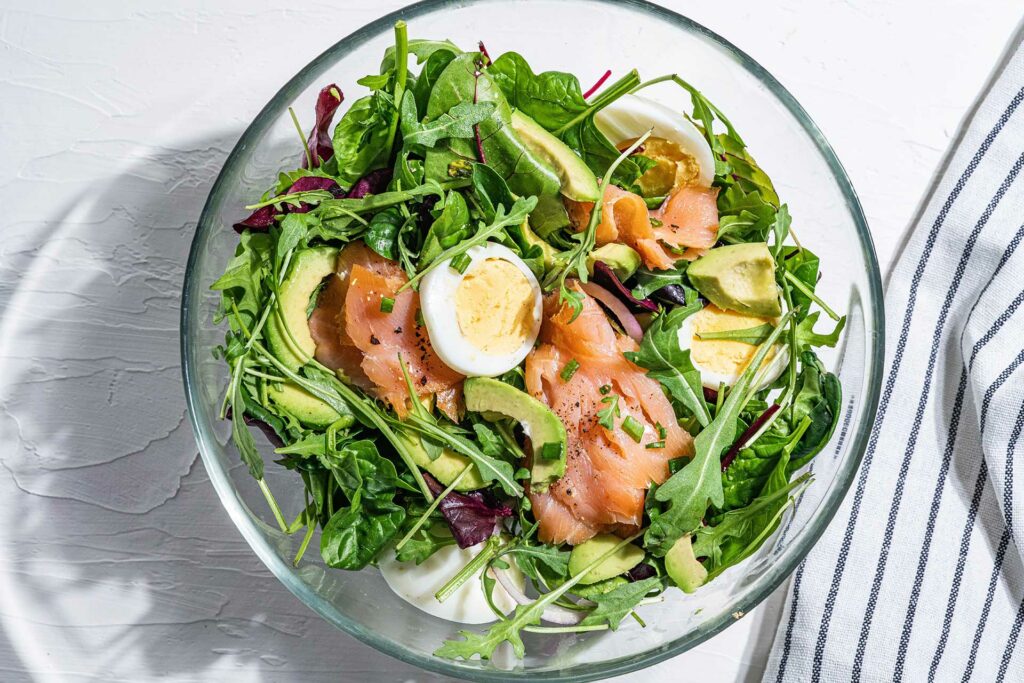
Traditional Salmon Dishes from Different Cuisines
Salmon is celebrated in various cuisines around the world, each showcasing its unique flavors and preparations. Let’s explore some traditional salmon dishes that are beloved in different culinary traditions:
- Gravlax: Originating from Scandinavia, gravlax is a traditional dish that involves curing salmon with a mixture of salt, sugar, and dill. The salmon is then pressed and refrigerated for a few days to develop its delicate flavor and silky texture. Thinly sliced gravlax is traditionally served on rye bread or alongside creamy mustard-dill sauce.
- Salmon Teriyaki: Japanese cuisine features the popular salmon teriyaki, a dish that showcases the harmonious balance of sweet and savory flavors. Salmon fillets are marinated in a teriyaki sauce, typically made with soy sauce, mirin, sake, and sugar. The salmon is then grilled or pan-seared, allowing the glaze to caramelize and create a deliciously sticky coating.
- Salmon Ceviche: In Latin American cuisine, salmon ceviche offers a refreshing and tangy take on this fish. The salmon is marinated in a citrus-based mixture, typically using lime or lemon juice, which “cooks” the fish without heat. Additional ingredients such as onions, cilantro, and chili peppers are added for extra flavor. The result is a vibrant and zesty dish that highlights the natural taste of salmon.
- Smoked Salmon: Smoked salmon is a beloved delicacy found in various cuisines worldwide. The process of smoking salmon over wood imparts a distinct smoky flavor while adding a touch of saltiness. Cold-smoked salmon has a silky texture and is often thinly sliced for serving on bagels, in salads, or as an elegant appetizer. Hot-smoked salmon is cooked through and has a firmer texture, making it ideal for flaking into salads or incorporating into pasta dishes.
These traditional salmon dishes demonstrate the versatility of this fish and the diverse flavor profiles it can take on in different culinary traditions. Exploring these recipes allows you to experience the cultural richness and culinary creativity associated with salmon.
Salmon, with its characteristic taste and ability to adapt to various cooking methods and flavor combinations, offers an exciting culinary adventure. Whether you prefer the simplicity of grilling, the tenderness of poaching, or the boldness of teriyaki glaze, there is a cooking technique that will bring out the best in salmon. So, let your taste buds guide you as you embark on the journey of preparing and savoring this remarkable fish.
Tips for Enjoying Salmon
Now that you have a deeper understanding of the taste, cooking methods, and flavor pairings of salmon, it’s time to explore some helpful tips for enjoying this versatile fish to the fullest. From selecting the freshest salmon to exploring different recipes and side dishes, these tips will enhance your salmon experience and ensure that every bite is a delight.
Choosing Fresh and High-Quality Salmon
When it comes to enjoying salmon, selecting fresh and high-quality fish is paramount. Here are some tips to help you choose the best salmon:
- Appearance: Look for salmon with vibrant colors and firm flesh. The skin should be shiny and free from blemishes or discoloration. If buying fillets, they should be moist and have a fresh smell.
- Smell: Fresh salmon should have a clean and slightly briny aroma. Avoid fish with a strong fishy odor, as it may indicate that the salmon is not fresh.
- Source: Buy salmon from reputable sources, such as trusted fishmongers or reputable seafood markets. They are more likely to offer high-quality fish that has been handled and stored properly.
- Labels: If purchasing packaged salmon, check the labels for information on the source and production methods. Look for certifications like the Marine Stewardship Council (MSC) or Aquaculture Stewardship Council (ASC) to ensure sustainable and responsibly sourced salmon.
By paying attention to these factors, you can ensure that you are purchasing the freshest and highest-quality salmon available.
Proper Storage and Handling of Salmon
To maintain the quality and freshness of salmon, proper storage and handling are essential. Here are some guidelines to follow:
- Refrigeration: If you are not planning to cook the salmon immediately, store it in the refrigerator. Keep the fish wrapped in plastic wrap or placed in an airtight container to prevent moisture loss and exposure to other foods.
- Freezing: If you have purchased fresh salmon but won’t be using it within a few days, freezing is a great option. Wrap the salmon tightly in plastic wrap and place it in a freezer bag to prevent freezer burn. When properly stored, salmon can be kept in the freezer for up to three months.
- Thawing: When thawing frozen salmon, do it slowly in the refrigerator overnight or use the defrost function on your microwave. Avoid thawing at room temperature, as it can promote bacterial growth.
- Preventing Cross-Contamination: When handling raw salmon, ensure that your hands and utensils are clean to prevent cross-contamination. Wash your hands thoroughly after handling raw fish and sanitize surfaces and cutting boards that have come into contact with the fish.
By following these storage and handling practices, you can preserve the quality and flavor of your salmon, ensuring a delicious and safe dining experience.
Exploring Different Salmon Recipes
Salmon’s versatility opens up a world of culinary possibilities. Whether you prefer healthy and light preparations or indulgent and flavorful dishes, there is a salmon recipe to suit every palate. Here are some ideas to inspire your culinary adventures with salmon:
- Healthy Options: Grilled or baked salmon seasoned with herbs and spices is a nutritious and satisfying choice. Serve it with a side of steamed vegetables or a fresh salad for a well-balanced meal. You can also incorporate salmon into grain bowls or wrap it in lettuce leaves for a light and refreshing option.
- Indulgent Recipes: If you’re looking to indulge, consider creamy preparations like salmon with lemon-dill sauce or pan-seared salmon with a rich buttery glaze. These recipes elevate the flavors of salmon and create a decadent dining experience. Pair them with mashed potatoes or roasted asparagus for a complete and comforting meal.
- Quick and Easy Meals: Salmon can be a quick and easy option for busy weeknights. Prepare salmon salads with mixed greens, cherry tomatoes, and a tangy vinaigrette. Wrap grilled salmon in tortillas with avocado, lettuce, and a squeeze of lime for a flavorful and satisfying wrap.
Pairing Salmon with Complementary Side Dishes
To create a well-rounded meal, consider pairing salmon with complementary side dishes that enhance its flavors. Here are some side dish ideas that go well with salmon:
- Roasted Vegetables: Roasted asparagus, Brussels sprouts, or root vegetables like carrots and sweet potatoes make delicious and nutritious accompaniments to salmon. The caramelized flavors of roasted vegetables complement the richness of the fish.
- Quinoa or Wild Rice: Serve salmon with a side of quinoa or wild rice for a hearty and wholesome meal. These grains provide a textural contrast and are packed with nutrients, adding to the overall nutritional value of the dish.
- Fresh Salads: Crisp and refreshing salads, such as a mixed green salad with cherry tomatoes, cucumbers, and a light lemon vinaigrette, provide a bright counterpart to the richness of salmon. The combination of fresh greens and tangy flavors enhances the overall dining experience.
By pairing salmon with complementary side dishes, you can create a well-balanced and satisfying meal that showcases the versatility of this remarkable fish.
With these tips in mind, you are now equipped to enjoy salmon in all its glory. Whether you’re a seasoned salmon lover or new to the world of this flavorful fish, the exploration of different recipes, side dishes, and cooking techniques will enhance your appreciation and enjoyment of salmon’s delightful taste. So, let your culinary creativity soar as you savor the wonders of salmon cuisine!
Final Thoughts
Congratulations! You’ve now embarked on a flavorful journey through the world of salmon, discovering its taste, characteristics, cooking methods, and serving suggestions. Salmon, with its distinct flavor profile and versatility in the kitchen, offers endless possibilities for creating delicious and memorable meals.
From the mild and delicate flavor of Atlantic salmon to the rich and buttery taste of Chinook salmon, each species brings its unique qualities to the table. The physical characteristics of salmon, such as its size, color, and texture, add to the visual and sensory experience of enjoying this magnificent fish. Understanding the factors that influence the taste of salmon, such as habitat, diet, and cooking methods, allows you to appreciate the nuances and variations in flavor.
Experimenting with different cooking methods, such as grilling, baking, pan-searing, or poaching, unlocks the full potential of salmon’s taste and texture. Pairing salmon with complementary flavors, such as lemon and dill, teriyaki glaze, honey and mustard, or maple and soy sauce, elevates its natural flavors and creates a harmonious culinary experience.
Whether you prefer traditional dishes like gravlax or salmon teriyaki, or you’re inclined towards healthier options like grilled salmon salads or quick and easy wraps, there are countless recipes to explore and enjoy. Add a touch of creativity to your meals by experimenting with different side dishes, such as roasted vegetables, quinoa or wild rice, and fresh salads, to create a well-rounded and satisfying dining experience.
Remember that selecting fresh and high-quality salmon, properly storing and handling it, and following food safety guidelines are crucial for a safe and enjoyable culinary adventure. By taking these precautions, you can ensure that every bite of salmon is a delight.
Salmon not only satisfies the taste buds but also provides numerous health benefits. With its rich omega-3 fatty acids, high-quality protein, and essential nutrients, including salmon in your diet can contribute to overall well-being. Its versatility makes it suitable for a wide range of dietary preferences and requirements.
So, whether you’re a seafood enthusiast or someone looking to expand your culinary horizons, salmon offers a delightful and flavorful experience. Indulge in the robust and buttery taste, appreciate the unique characteristics of each species, and explore the endless possibilities for cooking and serving this remarkable fish.
Now, armed with a wealth of knowledge and inspiration, it’s time to embark on your own salmon culinary adventures. From simple weeknight meals to elegant dinner parties, let the taste of salmon take center stage and delight your taste buds. So, grab your apron, gather your ingredients, and let the flavors of salmon shine in your kitchen!
Remember, the question “What does salmon taste like?” is best answered through personal experience. So, go ahead and savor the delights of this incredible fish. Enjoy your salmon journey, and bon appétit!
